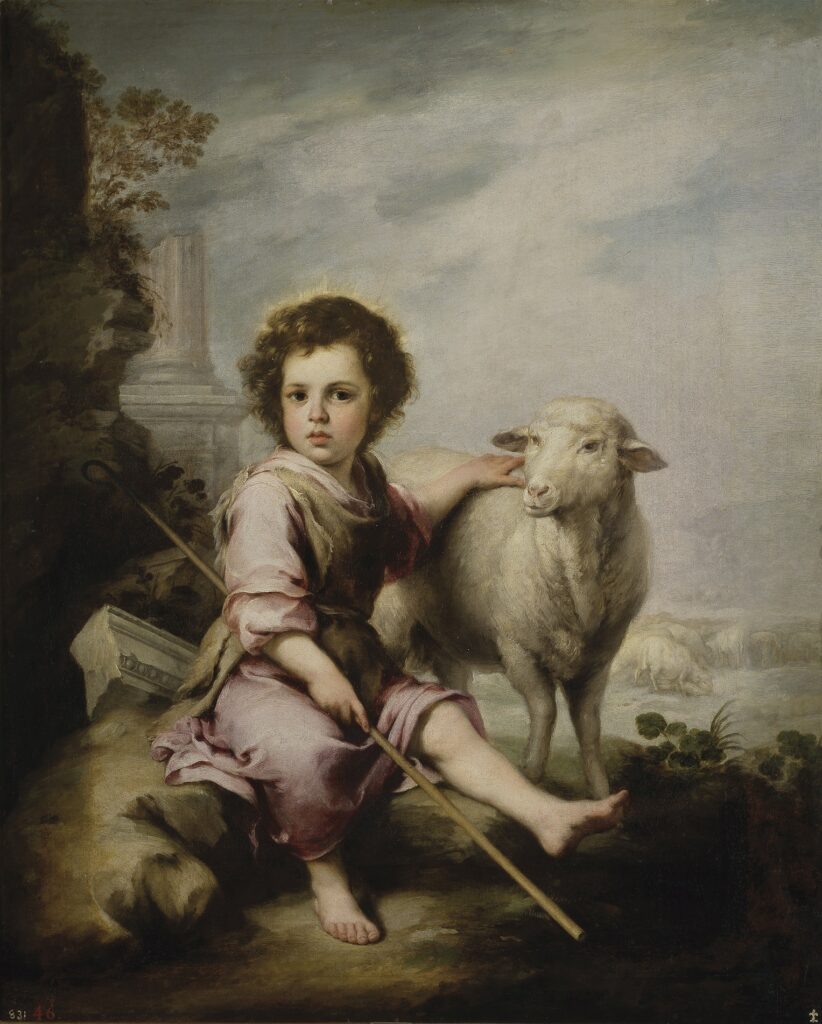This cantata was composed for May 22, 1725 which was Whit Tuesday, i.e. the Tuesday after Pentecost. Its second performance on June 1st, 1727 is what puts it on our calendar to listen to, as part of Bach’s 4th year in Leipzig.
The libretto is by Christiane Mariane von Ziegler, who collaborated with Bach on a small cycle of cantatas during his 2nd year in Leipzig. Bach adjusted von Ziegler’s text in several spots. The libretto is based on the Gospel of the day, John 10: 1-10, which refers to the image of Jesus as the “Good Shepherd”. It includes two literal quotes from the Gospel: one for the opening recitative and the other one for the first statement of the 5th movement by the alto.
The use of the two quotes serves the purpose of segmenting the libretto into two parts – movements 1 through 4 deal with the image of the Good Shepherd, and 5 through 7 with the concept of “opening one’s ears” to be a good follower of Jesus.
The instrumentation chosen by Bach for this cantata is unusual and interesting. 3 recorders are protagonists and the usual strings are relegated to a lesser role. The cantata doesn’t have a choral movement to start – instead, Bach sets the opening verse from the Gospel as a recitative for the tenor with the 3 recorders and continuo. This choice is connected with the image of the shepherd, since the recorder would have drawn the association with pastoral scenes in the audience. The following aria builds on this image – Bach keeps the recorders and gives the vocal line to the alto, with a ternary rhythm evocative of serenity and care (“a portrait of ovine contentment”, says Gardiner in his notes).
The tenor comes on again for the next recitative, which uses all sorts of crunchy harmonies to depict the words – from the high note for “Ach!” to the long note on a diminished fifth for “sehne” (“yearning”). This angst turns to happiness in the next aria, which features the unusual accompaniment of the violoncello piccolo, as the tenor recognizes the voice of the true shepherd. Bach used the violoncello piccolo in 10 extant cantatas, choosing it for its agile but tender character.
Opening the second section of the cantata, the alto enunciates the quote from the Gospel – “they did not grasp what he had said”. The bass continues as the text draws on the image of the deaf and highlights the importance of listening closely to Jesus. The recitative turns into an arioso on the last 2 verses, as the words refer to Jesus speaking. It’s remarkable that this is the first movement of the cantata to use strings, which during the arioso create an accompaniment texture reminiscent of what the recorders had done at the opening.
The triumphant bass aria that follows, with 2 trumpets, reinforces the concept of “opening one’s ears”. The savior, depicted in the text as “slayer of the devil and death” probably inspired Bach to choose the trumpets to convey the message.
The chorale that closes the cantata, on a text by Johann Rist (1651), brings back the 3 recorders on independent parts while the strings double the voices.
